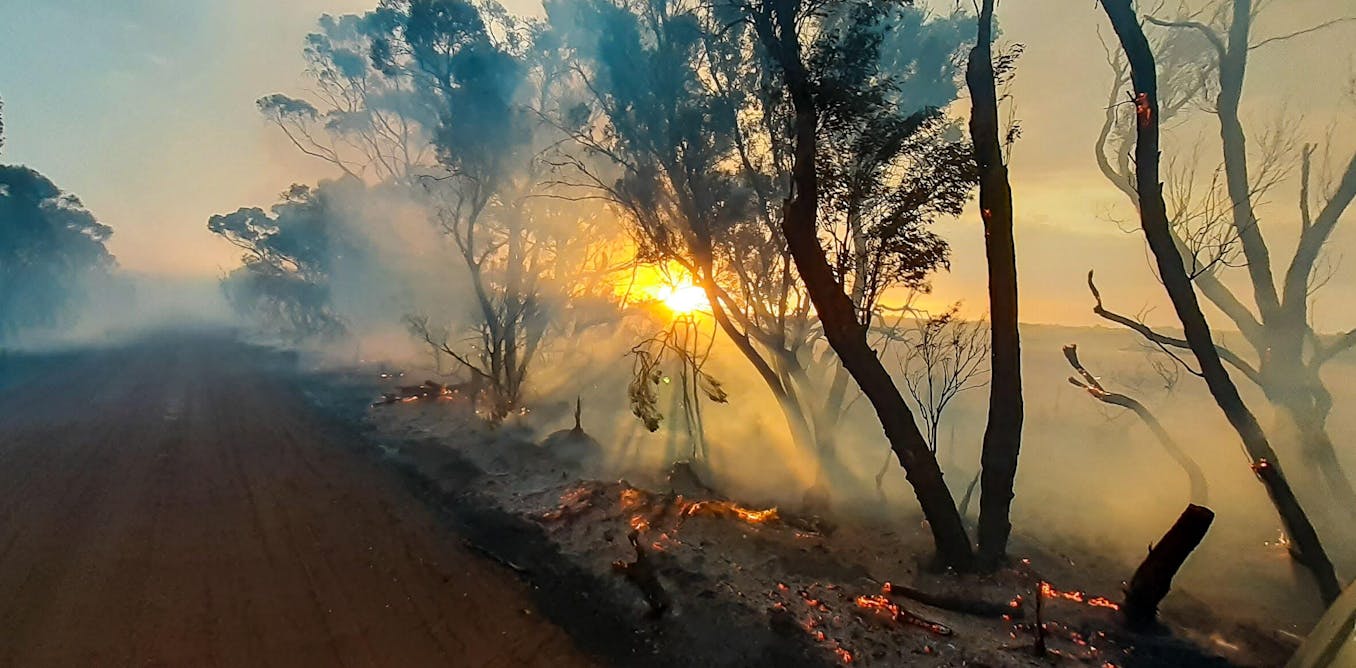Mastering Bushfire Preparedness: The Role of a BAL Assessment in Risk Mitigation
Mastering Bushfire Preparedness: The Role of a BAL Assessment in Risk Mitigation
Blog Article
The Importance of Bushfire Monitoring in Fire Defense
In the world of fire security, the relevance of efficient bushfire administration can not be downplayed. As communities worldwide grapple with increasing circumstances of wildfires, the aggressive strategy to avoid and reducing these natural disasters through strategic bushfire management approaches has actually become a critical component. Beyond the prompt risk to human life and building, the interaction between bushfire management and environmental conservation, area participation, and climate change postures intricate challenges that demand extensive remedies.
Value of Proactive Bushfire Prevention
Positive bushfire avoidance strategies are important in reducing the ravaging effects of wildfires on environments and neighborhoods. One vital aspect of positive bushfire avoidance is fuel administration.
Informing the public on fire safety practices and advertising neighborhood understanding regarding the relevance of bushfire prevention are crucial elements of proactive strategies. Inevitably, aggressive bushfire avoidance plays a substantial duty in safeguarding neighborhoods and communities from the devastating effects of wildfires.
Role of Neighborhood Involvement in Fire Security
Engaging the neighborhood in fire defense efforts is indispensable to improving the effectiveness of aggressive bushfire prevention strategies. Area engagement plays a crucial duty in cultivating a collective understanding of the risks positioned by bushfires and the significance of preparedness actions. By including regional citizens, authorities can share vital info on fire security techniques, emptying treatments, and early warning systems, empowering individuals to take proactive steps to safeguard their properties and lives.
In addition, area interaction efforts help develop strength within neighborhoods, promoting a feeling of unity and shared responsibility in mitigating fire dangers. Via workshops, training sessions, and community events, homeowners can find out exactly how to create defensible spaces around their homes, minimize fire gas lots, and identify potential risks. By promoting a society of readiness and cooperation, areas can strengthen their capacity to react efficiently to bushfire emergencies, minimizing the effect on buildings and lives. Ultimately, neighborhood engagement is a cornerstone of thorough fire protection techniques, highlighting the relevance of collective action in safeguarding susceptible locations from the hazard of bushfires.
Relevance of Wildlife Preservation in Bushfire Administration
Preservation of wildlife plays an essential role in efficient bushfire monitoring methods, guaranteeing the security of varied ecosystems and biodiversity in fire-prone areas. Wild animals preservation is important as it adds to the total strength of environments, helping in their capacity to hold up against and recoup from the influence of bushfires. By preserving environments and safeguarding various varieties, the natural balance within these ecosystems is preserved, which is necessary for their lasting health and sustainability.
Moreover, wild animals preservation also aids in minimizing the threat and intensity of bushfires. Healthy and balanced environments with unspoiled wildlife populaces can function as natural firebreaks, slowing down the spread of fires and restricting their harmful potential (BAL Report). Certain animal varieties, like delving pets or birds that spread out seeds, play one-of-a-kind roles in avoiding fires or helping in the post-fire regrowth of environments
Incorporating wildlife conservation right into bushfire management techniques is not only important for securing biodiversity however likewise for promoting the total health and strength of environments when faced with increasing fire threats.
Advantages of Strategic Fuel Decrease Programs
Purposefully executing fuel reduction programs is crucial in minimizing the danger and effect of bushfires in fire-prone areas. These programs involve controlled burning, mechanical clearing, and other techniques to decrease the quantity of combustible plants readily available to fuel wildfires. By tactically decreasing fuel loads in essential locations, such as close to household areas or essential facilities, the intensity and spread of bushfires can be dramatically reduced.
Among the main advantages of fuel his response decrease programs is the enhancement of overall fire durability in an environment. By producing tactical gas breaks and lowering the continuity of plant life, these programs aid to disrupt the course of a bushfire, making it simpler for firemens to contain and extinguish the blaze. Additionally, fuel reduction programs can protect biodiversity by stopping excessively intense fires that can ruin environments and intimidate wildlife populations.
In addition, these programs can also protect human lives and residential property by decreasing the risk of disastrous fires that posture a considerable threat to communities. Eventually, critical gas reduction programs play a crucial duty in aggressive bushfire monitoring and promoting a much safer environment for both people and nature.
Impact of Environment Adjustment on Bushfire Threat

Higher temperatures cause drier greenery, making it a lot more at risk to ignition. Decreased rains in particular regions extends dry spell problems, even more raising the flammability of the landscape. Furthermore, the transforming environment has check over here altered wind patterns and weather, resulting in even more unpredictable fire habits and quick fire spread.
As the climate remains to transform, the frequency and intensity of bushfires are expected to rise, demanding a adaptive and aggressive technique to bushfire monitoring. Approaches should progress to represent the altering danger landscape, including environment estimates and considering long-lasting durability in fire management planning. Resolving the impact of environment adjustment on bushfire risk is critical in developing efficient approaches to protect lives, building, and the setting.
Verdict
In final thought, proactive bushfire avoidance, community interaction, wild animals preservation, critical gas decrease programs, and factor to consider of environment modification are vital parts in efficient fire security. By executing these methods, we can much better handle bushfire dangers and safeguard both human lives and the atmosphere. BMP. It is vital that stakeholders function together to prioritize these measures to decrease the devastating impact of bushfires on communities and neighborhoods

As the environment proceeds to transform, the regularity and intensity of bushfires are expected to rise, necessitating a proactive and adaptive strategy to bushfire monitoring.In verdict, proactive bushfire avoidance, area involvement, wild animals conservation, tactical fuel reduction programs, and factor to consider of climate modification are essential elements in reliable fire protection.
Report this page